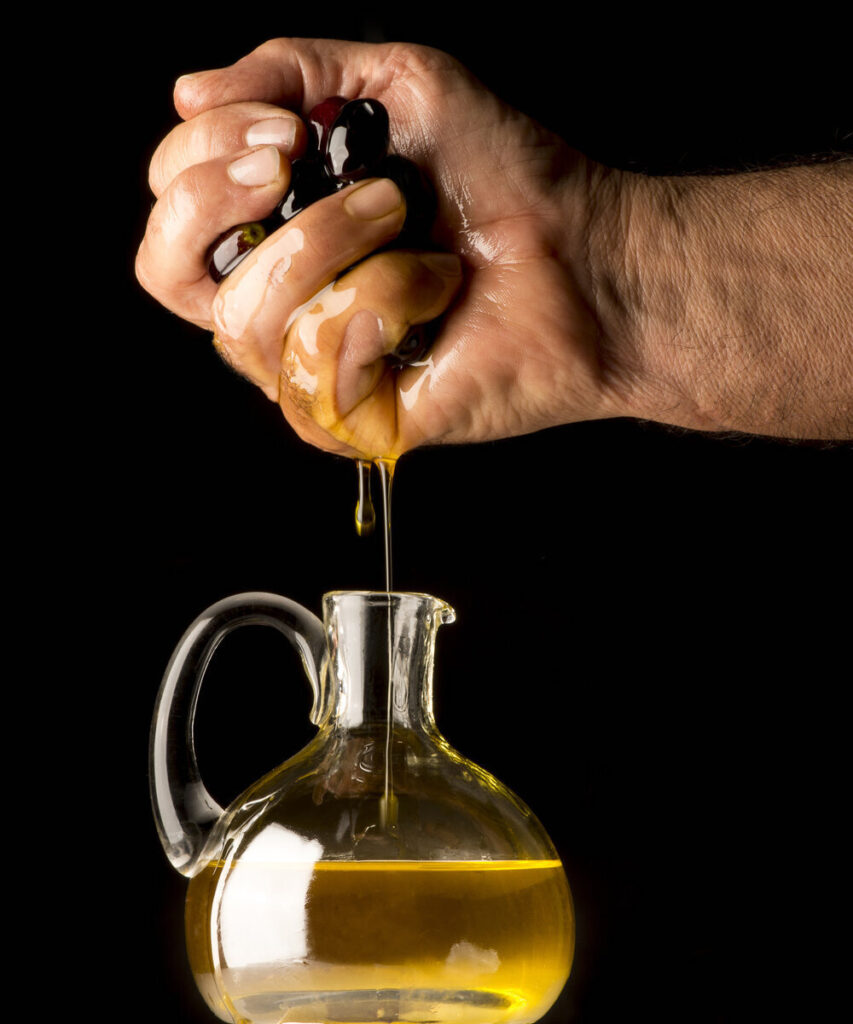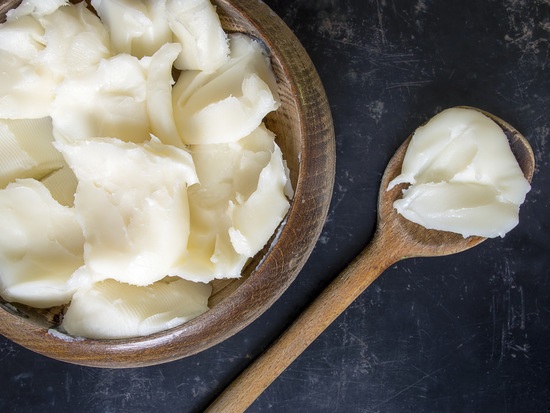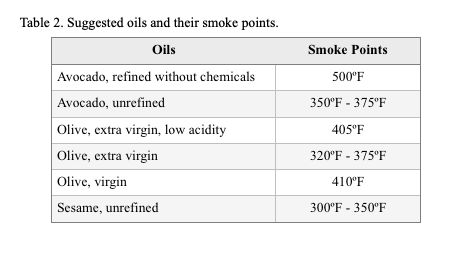The following excerpt, taken from my cookbook, is about the worst cooking oils (and the best). It demystifies this topic to help you make informed choices when shopping for oil. Each of the following topics will be explained.
- plant sources
- extraction and processing methods
- hydrogenation
- and smoke points
All oils are not created equal!

Sources
Genetically Modified Oils
Stay away from oils produced from GMO crops –– namely canola, corn, soy, and cottonseed. In addition to being genetically engineered, these crops are all heavily sprayed with the herbicide glyphosate.
Canola oil is particularly troublesome and has permeated our food chain. It comes from a hybrid of the rape plant. Rapeseeds were originally grown for their oil during WWII to supply lubricant for ships and steam engines. After the war, there was no more demand for rapeseed oil. The plant was then hybridized to be lower in erucic acid so the oil could be consumed by humans –– and canola was born. A recent animal study shows significant weight gain and symptoms of Alzheimer’s disease from chronic consumption of canola oil [1]. Others show it depletes vitamin E. Sadly, this cheap oil is used heavily in processed foods, prepared foods, hospitals, schools, cafeterias, and restaurants; it is even contained in some of the foods sold at health food stores.
Olive Oil
I suggest using olive oil as your “go-to” oil in the kitchen. It has been safely consumed for centuries and has been researched extensively. Olives and thus olive oils contain antioxidants, vitamin E, vitamin K, and essential fatty acids. It is primarily a monounsaturated fat. Please note that fraud is a real problem in the olive oil trade. The bottle may say olive oil but it may in fact be diluted with canola oil or other oils! Only buy olive oil that has a respected stamp of approval such as COOC (California Olive Oil Council) or NAOOA (North American Olive Oil Association), EVA (Extra Virgin Alliance), or Italy’s UNAPROL 100% Qualita Italiana. Also, if the olive oil has won contests you know it is pure. The annual NYC award winners can be found online at nyoliveoil.com and the CA winners can be found at www.cooc.com.
Avocado, Sesame, and Coconut Oils
Refined avocado oil has the highest smoke point and is a good choice when cooking at high temperatures. Choose avocado oil that’s been refined without chemicals. Sesame oil has a sweet, nutty flavor and is well suited for Asian cuisine. Coconut oil is touted as being a healthy choice, but it’s 90% saturated fat and lacks omega 3, vitamins, and minerals. For those reasons, I rarely use coconut oil and wonder if it will eventually be looked at as a fad.
Extraction and Processing Methods
Pressing
Man has been mechanically pressing the oil from fruits, nuts, and seeds for centuries. Cold-pressed oils are mechanically pressed without chemicals or heat; this is the most desirable method for extraction. Expeller-pressed oils are also mechanically pressed without chemicals, but there is friction involved which creates heat, destroying some of the nutrients.
Centrifugue
Most olive oil bottlers use a centrifuge to extract the oil from the olives; the traditional cold-press method is less commonly used. If bottled in the US, the label can still say “cold-pressed” even when centrifuged; Italy has stricter standards and doesn’t allow such misleading labels. “Extra virgin” means the oil has superior aroma and flavor, “virgin” being a notch lower. If the label doesn’t state “extra virgin” or “virgin,” it means the oil has been chemically refined.
Chemical solvents
Using chemical solvents to extract oils is a relatively newer technique. In the US most canola, corn, cottonseed, safflower, soy, and sunflower oils are extracted using a solvent called hexane. Hexane is a by-product of gasoline refining and considered neurotoxic by the Centers for Disease Control [2]. These solvent-extracted oils are also treated with additional chemicals such as bleach and deodorizers. Certified organic oils cannot be extracted using solvents.
Hydrogenated and Partially Hydrogenated Oils
Hydrogenation is a chemical process that converts unsaturated liquid fats into a solid through the addition of hydrogen. Fully hydrogenated oils become saturated fats, and partially hydrogenated oils become trans-fatty acids. Both increase your risk for cardiovascular disease. Partially hydrogenated trans fats actually double the risk by raising LDL (bad cholesterol) and lowering HDL (good cholesterol) [3]. These unhealthy fats are found in a lot of processed foods. Be aware that products can boast “trans-fat free” if the amount is less than 0.5 grams per serving. This is an example of why it’s important to carefully read ingredient labels and not just the marketing claims. The only plant oils that naturally become solid or semisolid at room temperature are coconut oil and palm oil; both are high in saturated fats. All other solid or semisolid plant oils, such as vegan spreads and sticks, are hydrogenated or partially hydrogenated.

Smoke Points
Oils have various smoke points –– temperatures at which they begin to degrade and literally emit smoke. Don’t heat oils to the point of smoking. If this does happen, let the oil cool down, then discard and start again. Harmful fumes and free radicals are created when oil is overheated; vitamins and antioxidants are destroyed [4] [5]. As a point of reference, when sautéing over medium-high heat, the oil heats up to approximately 250ºF.

If you enjoyed this post, you may also like How is Balsamic Vinegar Made?
Bibliography
- Lauretti, Elisabetta, Domenico Praticò. “Effect of Canola Oil Consumption on Memory, Synapse and Neuropathology in the Triple Transgenic Mouse Model of Alzheimer’s Disease.” Scientific Reports, December 2017.
- Agency for Toxic Substances and Disease Registry, US Department of Health and Human Services. “Public Health Statement for n-Hexane,” July 1999.
- Center for Food Safety and Applied Nutrition, US Food and Drug Administration. “Final Determination Regarding Partially Hydrogenated Oils,” 2015.
- Neghab, Masoud, Mahdieh Delikhoon, Abbas Norouzian Baghani, Jafar Hasanzadeh. “Exposure to Cooking Fumes and Acute Reversible Decrement in Lung Functional Capacity.” The International Journal of Occupational and Environmental Medicine, October 2017.
- Svedahl, Sindre, Kristin Svendsen, Torgunn Qvenild, Ann Sjaastad, Bjørn Hilt. “Short Term Exposure to Cooking Fumes and Pulmonary Function.” Journal of Occupational Medicine and Toxicology, May 2009.


No Comments